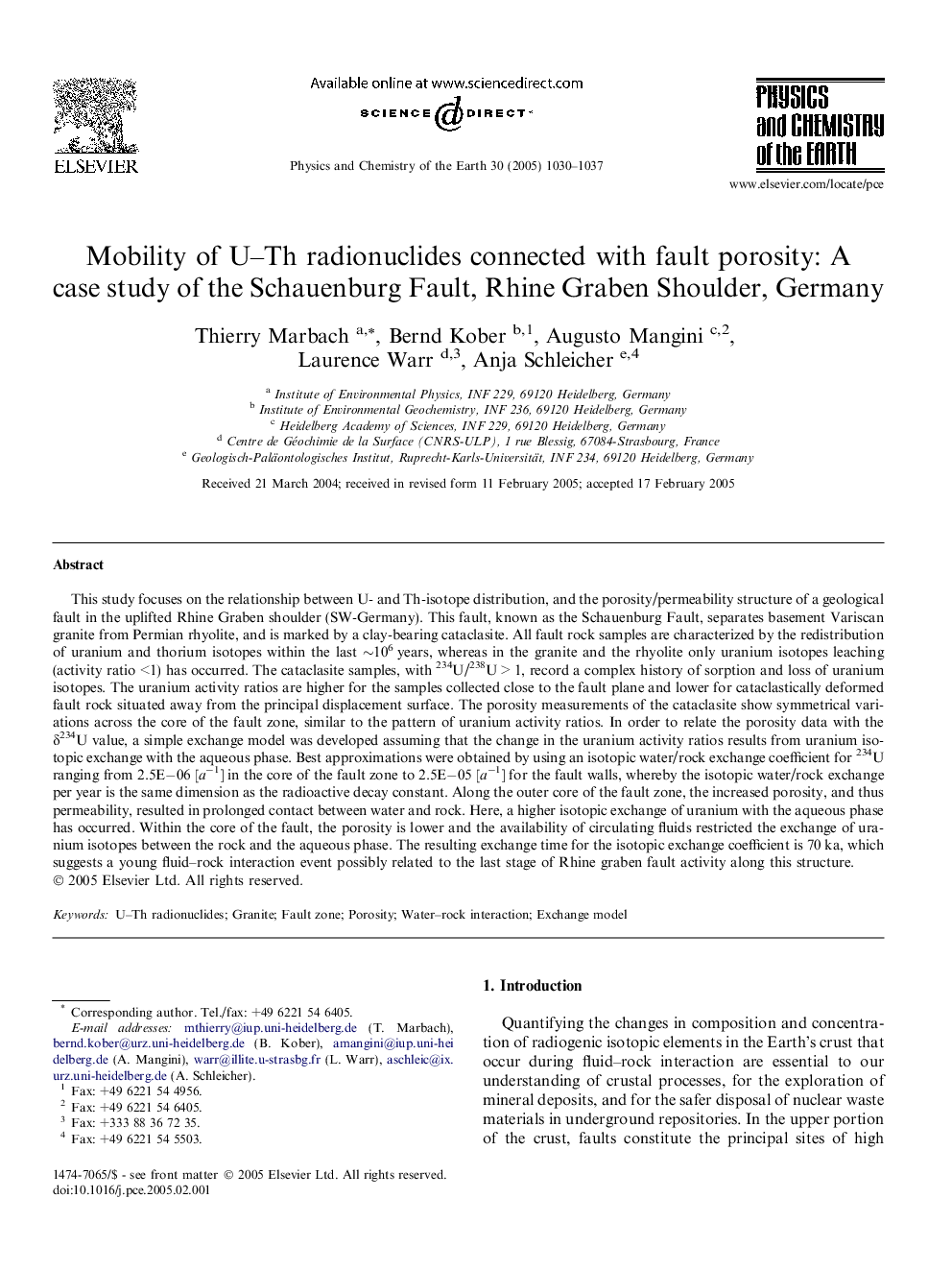| کد مقاله | کد نشریه | سال انتشار | مقاله انگلیسی | نسخه تمام متن |
|---|---|---|---|---|
| 10120002 | 1639412 | 2005 | 8 صفحه PDF | دانلود رایگان |
عنوان انگلیسی مقاله ISI
Mobility of U-Th radionuclides connected with fault porosity: A case study of the Schauenburg Fault, Rhine Graben Shoulder, Germany
دانلود مقاله + سفارش ترجمه
دانلود مقاله ISI انگلیسی
رایگان برای ایرانیان
کلمات کلیدی
موضوعات مرتبط
مهندسی و علوم پایه
علوم زمین و سیارات
ژئوشیمی و پترولوژی
پیش نمایش صفحه اول مقاله

چکیده انگلیسی
This study focuses on the relationship between U- and Th-isotope distribution, and the porosity/permeability structure of a geological fault in the uplifted Rhine Graben shoulder (SW-Germany). This fault, known as the Schauenburg Fault, separates basement Variscan granite from Permian rhyolite, and is marked by a clay-bearing cataclasite. All fault rock samples are characterized by the redistribution of uranium and thorium isotopes within the last â¼106 years, whereas in the granite and the rhyolite only uranium isotopes leaching (activity ratio <1) has occurred. The cataclasite samples, with 234U/238U > 1, record a complex history of sorption and loss of uranium isotopes. The uranium activity ratios are higher for the samples collected close to the fault plane and lower for cataclastically deformed fault rock situated away from the principal displacement surface. The porosity measurements of the cataclasite show symmetrical variations across the core of the fault zone, similar to the pattern of uranium activity ratios. In order to relate the porosity data with the δ234U value, a simple exchange model was developed assuming that the change in the uranium activity ratios results from uranium isotopic exchange with the aqueous phase. Best approximations were obtained by using an isotopic water/rock exchange coefficient for 234U ranging from 2.5Eâ06 [aâ1] in the core of the fault zone to 2.5Eâ05 [aâ1] for the fault walls, whereby the isotopic water/rock exchange per year is the same dimension as the radioactive decay constant. Along the outer core of the fault zone, the increased porosity, and thus permeability, resulted in prolonged contact between water and rock. Here, a higher isotopic exchange of uranium with the aqueous phase has occurred. Within the core of the fault, the porosity is lower and the availability of circulating fluids restricted the exchange of uranium isotopes between the rock and the aqueous phase. The resulting exchange time for the isotopic exchange coefficient is 70 ka, which suggests a young fluid-rock interaction event possibly related to the last stage of Rhine graben fault activity along this structure.
ناشر
Database: Elsevier - ScienceDirect (ساینس دایرکت)
Journal: Physics and Chemistry of the Earth, Parts A/B/C - Volume 30, Issues 17â18, 2005, Pages 1030-1037
Journal: Physics and Chemistry of the Earth, Parts A/B/C - Volume 30, Issues 17â18, 2005, Pages 1030-1037
نویسندگان
Thierry Marbach, Bernd Kober, Augusto Mangini, Laurence Warr, Anja Schleicher,